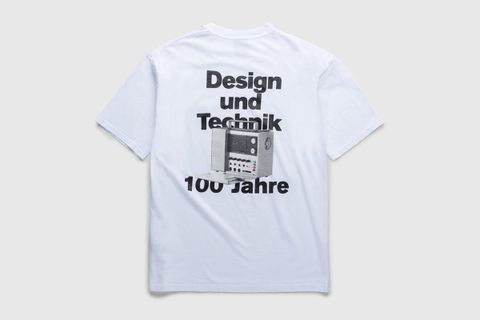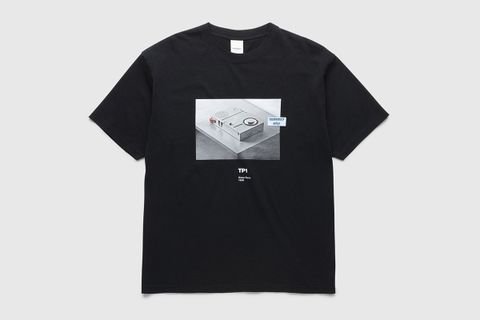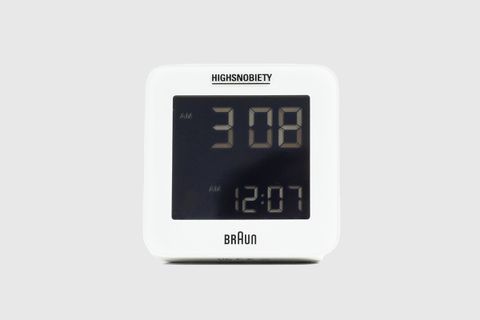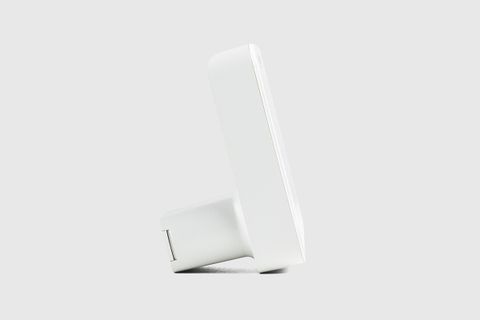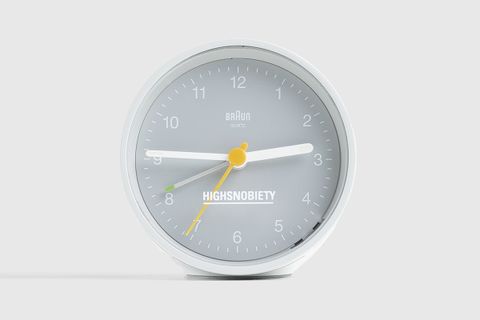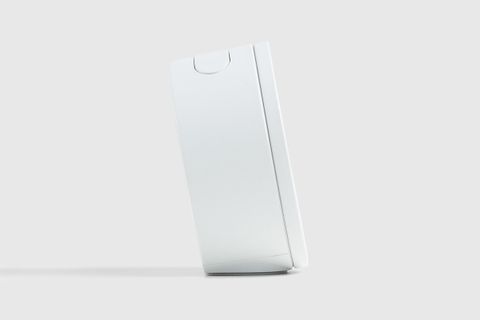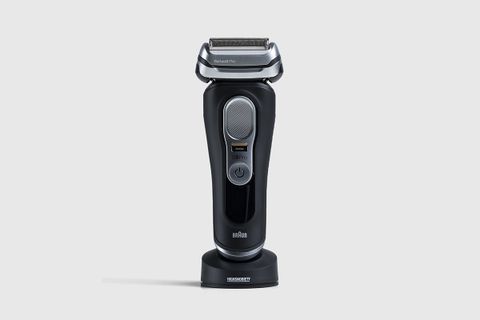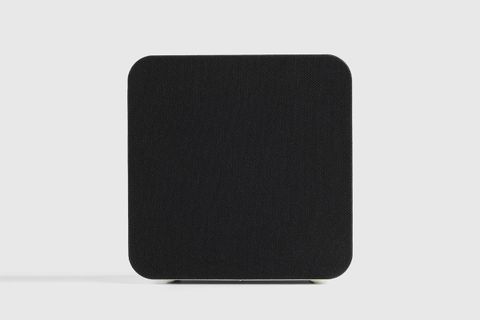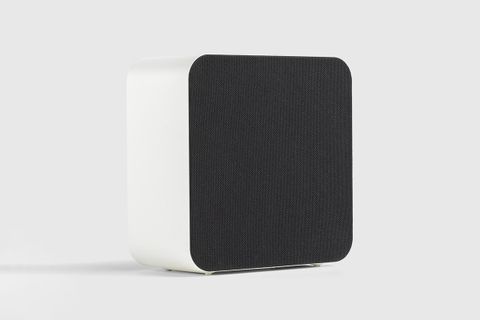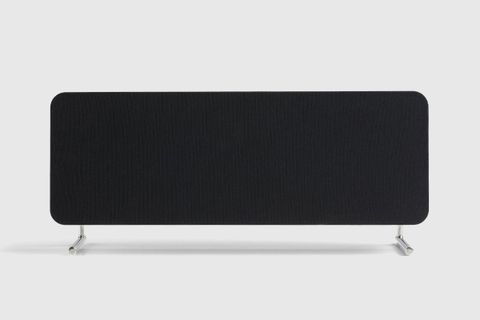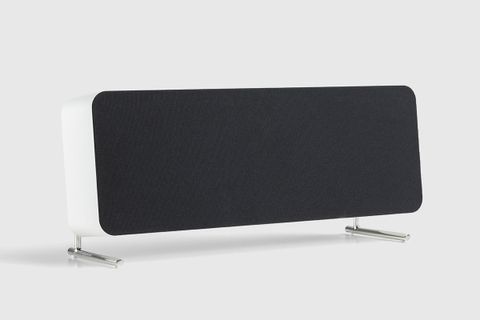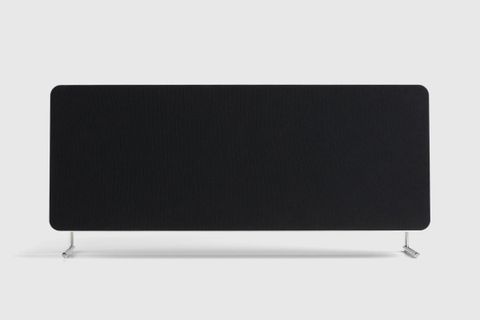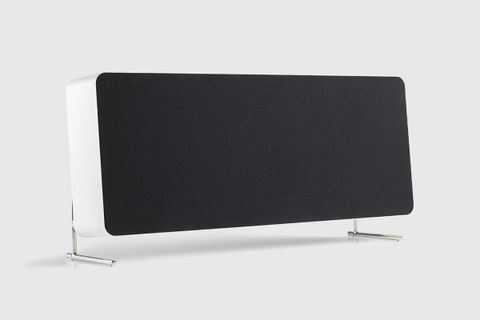The Designs that Forged an Icon: 100 Years of Braun
Our Braun collection drops today, shop it here.
Sometimes a brand comes along with an outlook so refreshingly new that it revolutionizes an art. While for some that means bringing extra qualities to the table, for Braun, it meant taking things away. Radical simplicity. Under the motto, “Less but better,” Braun set about altering the face of modern product design with a steadfast set of values that revolved around efficiency. Now, on Braun’s 100th anniversary, we look back at some of the designs that forged an icon.
Braun's archive can be seen as a sort of manifesto for meticulous design: from screw shape to ergonomic button placement, nothing is forgotten. Reduced to their logical conclusion, Braun products are unmatched in their timelessness, the only sign of their age being the electronics within.
But while essays, theses, and documentaries have explored Braun's philosophy in granular detail, nothing paints a fuller picture than taking a magnifying glass to the physical products themselves. In that vein, we've picked out five Braun products that continue to provide inspiration for the future of design with their unrivaled timelessness. Whether it's the Braun TP 1 from 1959 or the 2021-reissue of the Braun LE01 speakers, the brand proves time and time again that it has the momentum to be an icon well into the future.
Braun's 100th anniversary is not only about the past but is also a moment to reflect on what's to come in the future for the brand. Inspired by the brand's legacy, we've teamed up with Braun to create a collection that sees iconic Braun designs of the past through our future-facing lens.
The Braun x Highsnobiety collection celebrates Braun’s longevity and the impact its designs continue to have on our culture. For the project, we perfected the silhouettes of our favorite basics so they will become wardrobe staples years down the road, because good design always stays in style. Braun x Highsnobiety drops on November 10 at Highsnobiety Shop.
Braun TP 1
Housed in a clean aluminum carrying case, finished with an untreated leather handle, the TP 1 was the first appliance to combine two audio devices. TP 1 merged the T 4 pocket transistor radio and the P 1 miniature gramophone into one portable product.
The record player takes up two-thirds of the facade, with a rotating platform at the bottom-right corner. This mechanism would fit through the center of a 7-inch single and play at a speed of 45rpm. In order to bypass the need for a conventional tonearm and cartridge, which would clutter the aesthetic, the Braun TP 1’s stylus — revealed by adjusting the lever to open a sliding door — reads the record from underneath.
Finished with a transistor radio positioned at the top of the product, the TP 1 broke ground for portable audio equipment, paving the way for designs that were some 50 years from inception. Looks familiar? Just take a closer look at some of today’s entertainment electronics and you'll be able to spot the similarities.
Braun TS 45 L 450 TG 60
As the long name suggests, the Braun TS 45 L 450 TG 60 is actually three distinct products fitted together. The L 450 flat loudspeaker, TG 60 tape recorder, and TS 45 control unit came together to form a wall-mounted stereo system that was not only lightyears ahead of similar products technically but also visually.
Steel casings in white or dark grey, a steel cover panel, and light and dark grey controls set the stage for a green power switch. Color was used extremely sparingly and, if at all, only to provide information. This hyper-clean design language was intended to reflect the high sound quality.
And, while the Braun audio system’s connections were concealed in the system’s underside so that it could be hung on a wall, each of the components featured a smooth, clean reverse so that it could also be situated free-standing in a room. Nothing was left to chance, the design is characteristically thorough.
Braun DN 40
Braun's genius is often most apparent in the simplest of its products. Of course, it’s a feat of design to simplify one of the first all-wavelength radios but to recreate something as simple as the alarm clock and still manage to elevate it is almost more impressive.
The Braun DN 40 was just that: a simple product made even more simple. Braun’s classic white casing was the default color, but by this time — DN 40 was released in 1976 — the company had begun to explore bold base colors, too. The display was characteristically simple, with fluorescent digits that dimmed or brightened depending on the environment.
All of the button controls were set at the back of the clock and each button was designed to have a distinctive shape so that they could be used without looking. The finishing touch was the tip-to-stop function which allowed the user to turn off the alarm simply by tipping the clock backward. This removed the need for a big snooze button, freeing space for a pared-back finish.
Braun SM 31
The Braun SM 31 was designed by Gerd Alfred Müller and Hans Gugelot. Inspired by and named after the sextant, a nautical instrument, the Sixtant SM 31 was also based on the hexagonal holes of shaving foil. But, for the first time ever, rather than these holes being punched into the foil, the foil was produced with a special electroforming process.
Visually, the matt black housing gave an instant value impression of the SM 31, underpinning the superior shaving experience. The product was highly popular, establishing matt black as part of regular bathroom décor and reaching over 10 million units sold.
In 2021, Braun's output hasn't slowed down at all. Even its latest products like handheld shavers, minimal watches, and high-end speak systems rely on its unwavering design values. The German brand continues to break boundaries, working at the leading edge of innovation with its electronics and visual character. Despite its retrospective nature, Braun's 100th anniversary has, if anything, got us more excited about what the company has in store for the future.
Braun T 1000
Although hi-fi sound equipment was already well established in the USA and UK during the 1940s, Braun’s name within that field was largely made in the 1950s. Yes, the German imprint was late to the party, but with a refreshing, modular approach and superior all-around design, it didn’t take long for Braun to become the household name within audio tech.
There are many products that helped to build Braun’s audio reputation but few did more for the brand than the Braun T 1000. Housed in a small oblong case, the T 1000 could scan all available broadcasting frequencies. What might sound insignificant nowadays was ground-breaking in 1963. T 1000-designer Dieter Rams and Braun believed that well-designed products could promote democracy — a concept evidenced in abundance by the small, powerful T 1000. As Germany was still emerging from the remnants of WWII, the bandwidth and mobility of the T 1000 offered access to the world.
As a portable radio, the T 1000 needed to be small, but the technology needed to afford connection to all wavelengths presented a dilemma. Rams’ simple interface meant that the user could understand how to use the radio straight away and operate it with confidence. A range of carefully organized switches and toggles, combined with astute use of color meant that the T 1000 could be a complicated machine that worked for everyone.


